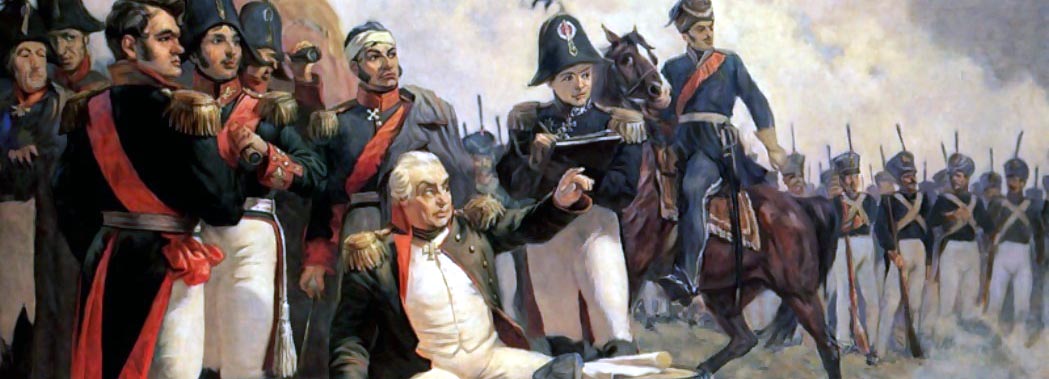One of the things I have learned through experience is that it helps to have something specific in mind when you start a project. There is nothing worse than drifting from unit to unit, never completing enough to field an army and ending up with figures you’ll never use. For example, a few years ago I built and painted a huge pile of Flames of War 15mm WWII Germans. The army started out as an infantry company, then I added halftracks to make it into a Panzergrenadier company, then I added different types of tanks from different stages of the war, and somewhere along the way I picked up a bunch of Fallschirmjägers. Obviously I was unconsciously emulating Speer’s methods of production; it took me a lot longer to build a playable army than it would have if I had just picked a single unit and stuck with it until it was finished before starting the next one. The army looks good now, but I built it in a very inefficient fashion. I don’t want to repeat this mistake.
Initially this Napoleonics project was intended to cover the battle of Quatre Bras, one of the clashes that took place immediately before Waterloo itself. This was an encounter between the Anglo-Dutch army and Ney’s I and II Corps of the Armee du Nord over a crucial road intersection. Quatre Bras provides a lot of interesting opportunities for “what if” scenarios and it features some of my favorite units, specifically the 42nd (Black Watch) and the 92nd (Gordon Highlanders).
However, there were drawbacks to wargaming Quatre Bras. First and foremost, the scenarios in the Waterloo rulebook do not use British cavalry. There are Dutch Hussars present – splendidly uniformed troopers, to be sure, but not British cavalry.
More pragmatically the Quatre Bras scenarios require a lot of troops. The scenario which uses the British infantry units I want field also requires three allied infantry brigades and an allied cavalry brigade. While I am not opposed to painting more models, that is a fairly steep barrier to entry. It would take over 370 more infantry models (plus supporting cavalry and artillery) to fill the Allied ranks. I still want to play some Quatre Bras-based games in the future, but I need a more manageable initial project.
Fortunately I have an alternative. There is a scenario in the Waterloo rulebook which has what I want – it has the British infantry, the British cavalry, and requires less figures. This is Scenario 7, “Cavalry Attack.” This order of battle is perfect for what I want to build and play; it has exactly the troops I want and cover and it portrays a very interesting and compelling event.
The British infantry is Sir Dennis Pack’s 9th Brigade of Sir Thomas Picton’s 5th Division. This consists of the 3rd Battalion, 1st Regiment of Foot (Royal Scots), the 2nd Battalion, 44th (East Essex), and, of course, the 42nd (Black Watch) and the 92nd (Gordon Highlanders). This brigade has a Foot Artillery battery in support.
The Allied infantry consists of two battalions of Dutch Militia and a battalion of Belgian Line. Despite the (unfair, in my opinion) poor reputation these units have been given, particularly in Bernard Cornwall’s popular account of Waterloo in the Sharpe, I will be proud to paint and field them.
The final selling point is the British cavalry. This scenario uses Sir William Ponsonby’s Union Brigade, represented here by the 6th (Inniskilling) Dragoons and the 2nd (Royal North British) Dragoons – the famous Scots Greys.
The Scots Greys are one of my favorite units of all time. I will describe what they did at the battle of Waterloo – their famous charge – in the future. Suffice it to say that this scenario covers a very dramatic event in their history, and the presence of the Scots Greys alone is enough to make me want to play this scenario. Historically they missed Quatre Bars – I won’t repeat that shortcoming!
So there we have it; I have picked a scenario and set a goal. I will cover how I will fit that pile of figures pictured below into this order of battle in an upcoming post.





